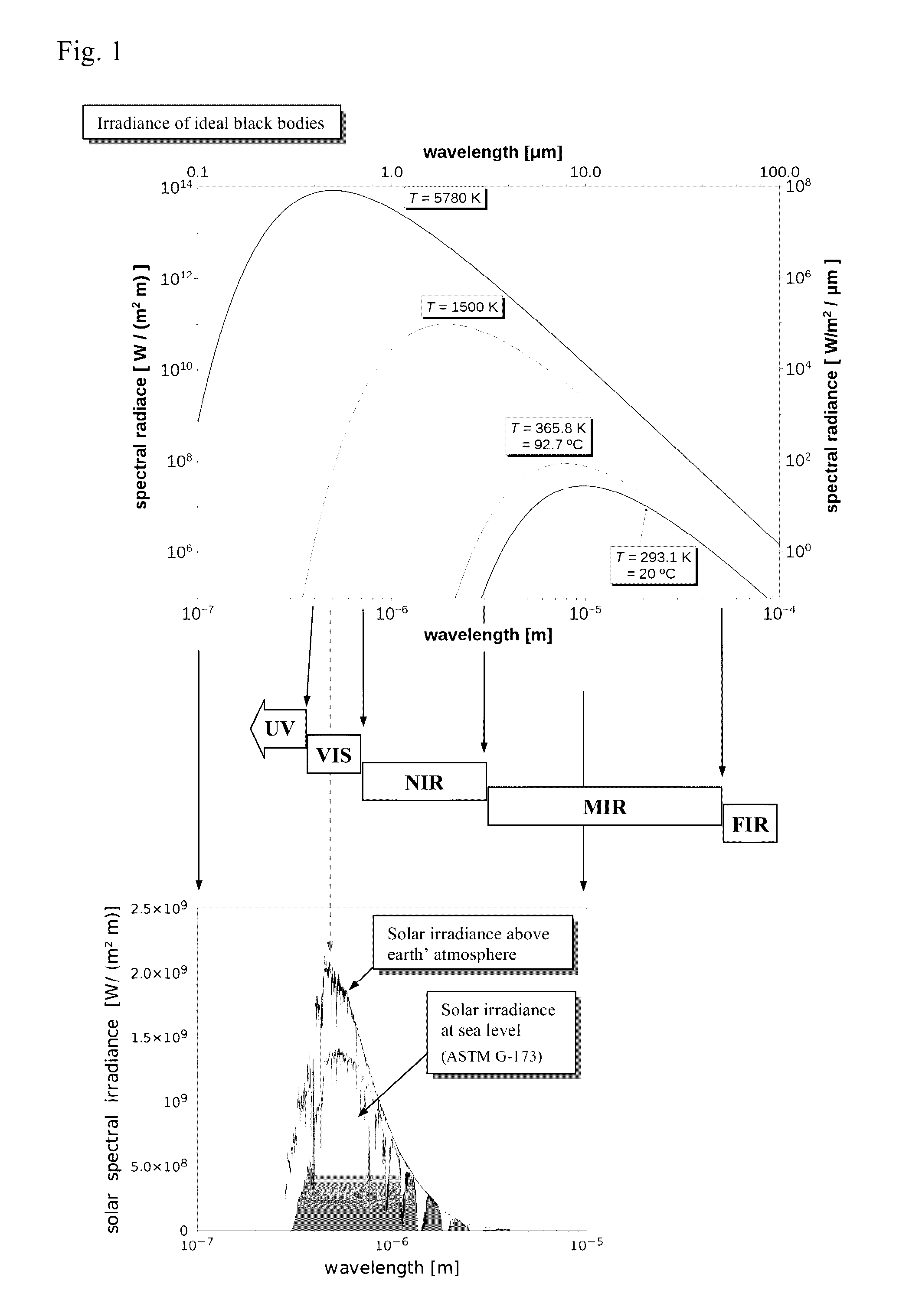Methods and functional elements for enhanced thermal management of predominantly enclosed spaces
a technology of functional elements and enclosed spaces, applied in space heating and ventilation details, domestic heating, climate sustainability, etc., can solve the problems of increasing energy expenditure for air conditioning and heating, building heat capacity is relatively low, and the solar irradiance and ambient temperature changes are very susceptible to building changes
- Summary
- Abstract
- Description
- Claims
- Application Information
AI Technical Summary
Benefits of technology
Problems solved by technology
Method used
Image
Examples
Embodiment Construction
[0153]It shall be noted that the disclosed invention is applicable to a wide variety of predominantly enclosed spaces ranging from simple shacks, shelters, tents, containers, temporary or emergency housing units, mobile homes, trailer, or vans, to high-end energy-consumption optimized villas and other houses (incl. so called “zero-energy house”) in the first world. This also includes structures, which are being used for fabrication or storage of goods, including food, garages, office buildings, and even high-rising buildings typically found in the center of modern cities.
[0154]Furthermore, the invention relates to any other predominantly enclosed spaces, which are exposed to electromagnetic radiation at least in the VIS and NIR wavelength range, and wherein it is desired to reduce temperature variations on the inside of said predominantly enclosed spaces while minimizing or completely eliminating the energy expenditure for required heating or cooling, and / or wherein it is desired to...
PUM
| Property | Measurement | Unit |
|---|---|---|
| Size distribution | aaaaa | aaaaa |
| Temperature | aaaaa | aaaaa |
| Length | aaaaa | aaaaa |
Abstract
Description
Claims
Application Information
 Login to View More
Login to View More - R&D
- Intellectual Property
- Life Sciences
- Materials
- Tech Scout
- Unparalleled Data Quality
- Higher Quality Content
- 60% Fewer Hallucinations
Browse by: Latest US Patents, China's latest patents, Technical Efficacy Thesaurus, Application Domain, Technology Topic, Popular Technical Reports.
© 2025 PatSnap. All rights reserved.Legal|Privacy policy|Modern Slavery Act Transparency Statement|Sitemap|About US| Contact US: help@patsnap.com



